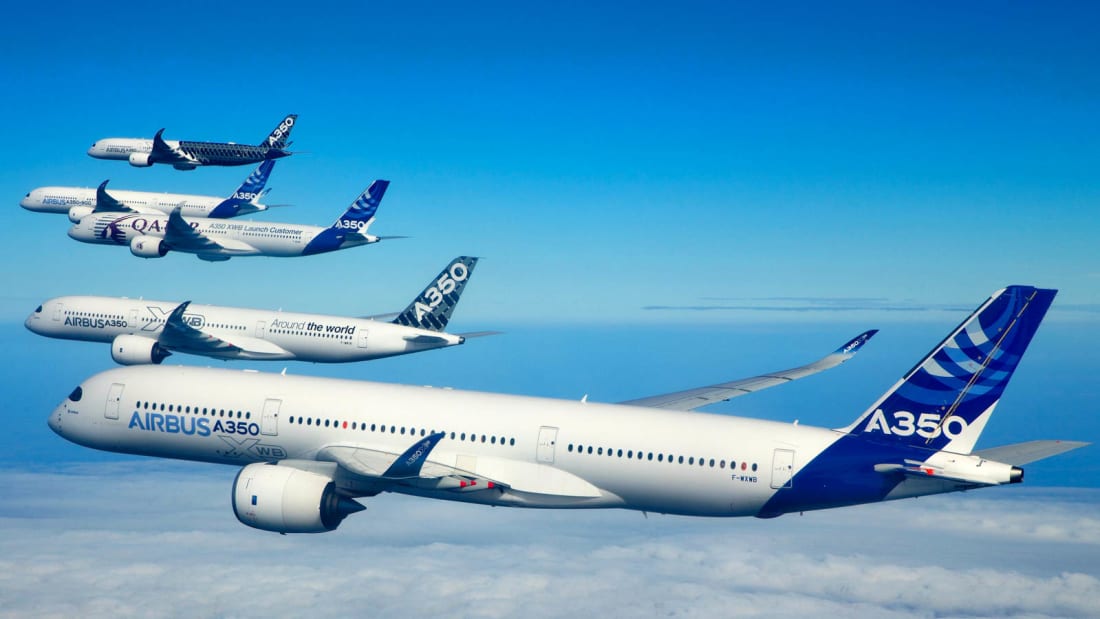The Future of Aviation and Promising Aircraft Engineering Projects
Times are tough for the generation that grew up on 20th-century science fiction. On the one hand, you seem to be overjoyed ⏤ every day, there is news about another technology, which seemed to be taken out of old books and transferred to the laboratory. On the other hand, doubts arise periodically about the soundness of one’s own mind.
What should we expect next? An aircraft that will fly right to Mars in 2 hours? An aircraft with batteries just like in our remotes? A robot that will conduct a high-quality aerodynamic analysis for aircraft project instead of engineers? Let’s take a look at the possible future of aviation and what peculiarities it has prepared.
Aircraft of Future: Airbus
According to BBC News, Airbus has unveiled three future aircraft concepts that will not use kerosene or emit carbon dioxide during flight. The company intends to achieve this by switching to hydrogen as the main fuel.
Airbus expects hydrogen aircraft to enter commercial operation in 2035 but admits that their use will require significant changes in airport infrastructure. One of the planes will operate on jet engines and will be able to carry 120-200 passengers over 3700 km.
The presented concepts are the starting point for further research on the creation of a carbon dioxide-free aircraft. That is why the final version of the airliners may differ significantly from the concepts.
Sun Aircraft
World energy is only 1% based on solar energy. Meanwhile, if humanity learned to utilize at least 30% of the energy of our luminary, then the extraction of natural fossil fuels could soon be forgotten.
This point of view is actively promoted by the automotive industry, in particular, Elon Musk with his Tesla electric vehicles. However, aviation is also gradually looking for ways to abandon the use of traditional energy sources.
For the first time, they started talking about the serious prospects of solar aircraft in 2009, the device under the eloquent name Solar Impulse was able to stay in the air for 26 hours. The aircraft, created by Swiss inventors Bertrand Picard and André Borschberg, is equipped with 4 electric motors, which are set in motion by energy collected by an array of 12 thousand photocells placed on the wings with a sweep of a football field ⏤ as much as 63 m.
GE Aviation
The last Concorde supersonic passenger aircraft was decommissioned in 2003 – since then, aircraft manufacturers have been trying to create similar aircraft and put them into commercial production.
Aerion AS2 will be able to carry 12 passengers and fly at a speed of Mach 1.4 (1,671 km / h). Aerion previously developed a business jet with Lockheed Martin, but the partnership was broken for unknown reasons.
In 2020, GE Aviation and Aerion will test the Affinity turbojet engine planned for the AS2. It is planned that the engine will be able to develop thrust up to 89 kilonewtons and will operate at an altitude of up to 18.3 thousand meters.
The business jet is expected to enter commercial production in 2023 with sales starting in 2025. By the way, it is worth noting that engineers, who have been hired around the world, presented such a design of aircraft back in 2014, but only now has it found a worthy application.
Conceptual Design
According to The Sun, British developers have shown a conceptual design for the cabin of the aircraft of the future.
The main emphasis in its development was placed on protecting travelers from the spread of infections. The innovative styling should also improve hygiene and flight quality. The seats will use material with ultraviolet cleaning methods to kill the germs of the coronavirus.
The names will also change: the economy class will be called Pure Skies Zones, and the business class ⏤ Pure Skies Rooms. Certain seats in the economy class of the future will be staggered to reduce passenger contact. There will no longer be entertainment television, it will be replaced by the ability to connect a smartphone to an outlet mounted in an armchair and watch your personal content.
Also, wireless charging will be built into the back of the seat. There will be no pockets for booklets, as they accumulate a lot of debris and harmful bacteria. Instead, they will make replaceable bags with a latch. Pure Skies Rooms will feature personal wardrobes, curtains, and large-screen TVs. It is planned that the project will be implemented in three years.
Boom Supersonic
In a little over a month, Boom Supersonic will unveil its XB-1 single-seat test aircraft, scheduled to begin flights in 2021. This could usher in a new era of supersonic travel and revolutionize aviation.
The 21 meters long single-seat XB-1 is designed to prove that a supersonic aircraft can be built much more efficiently and cheaper than in the 1960s. The XB-1 will use a variety of carbon fiber composites for its hull, which should help it better withstand heat and stress during supersonic flights. Boom Supersonic says the plane will be able to withstand over 150 degrees Celsius.
The Concordes did not have an on-board computer and had a movable nose ⏤ the pilots had to lower it to see the ground. The XB-1 has ditched this in favor of cameras on the nose and landing gear, which should reduce complexity. The aircraft’s design has been improved to increase the coefficient of thinness, make it narrower and sharper to reduce drag at high speeds.
If the XB-1 proves successful, Boom will begin construction on its Overture full-size supersonic aircraft. This is a plane designed for less than a hundred people, all at the business class level. At the same prices as a business class now, it will be possible to fly, for example, from Tokyo to Seattle in four and a half hours.


